It might seem strange to go to a cemetery as a tourist – it did to me the first time I was brought there. Yet nearly four years later, I went back.
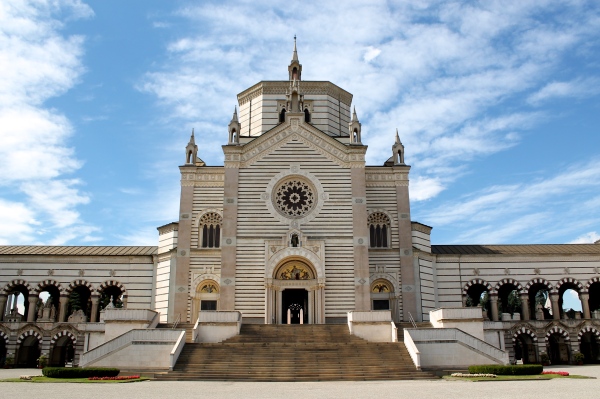
The Famedio, the main entrance to the Cemetery and heart of the complex, housing the most famous of Milan’s citizens.
Because the Cimitero Monumentale, or Monumental Cemetery, is more than just your average cemetery. It’s an enormous, elaborate look into a city; an open-air museum that represents the major historical events of the city as well as its main protagonists.
One of the two largest cemeteries in the area, it was commissioned in 1860 to unite the many small burial grounds throughout the city into one large cemetery and to give the community the chance to celebrate prominent Milanese (hence “monumental.”) After the independence in Italy in 1861 it also served as a way to unite the citizens, even if after death. The Cemetery holds graves from different beliefs and religions, with a section for the Jews and a section for other non-Catholics.
The monuments and sculptures show the change in art forms from the realism of the 19th century to the liberty and symbolism at the beginning of the 20th century. Each monument represents a different artist, each name engraved a permanent who’s-who of Milan of the age – only the richest, most popular and most influential are buried in Cimitero Monumentale.
Evidence of which is found in the Famedio, a massive building made of marble and stone five meters above the ground. Here is the crème de la crème of Milan, including Alessandro Manzoni, the Italian novelist most known for writing I Promessi Sposi.
Not to mention that it’s just wholeheartedly impressive.
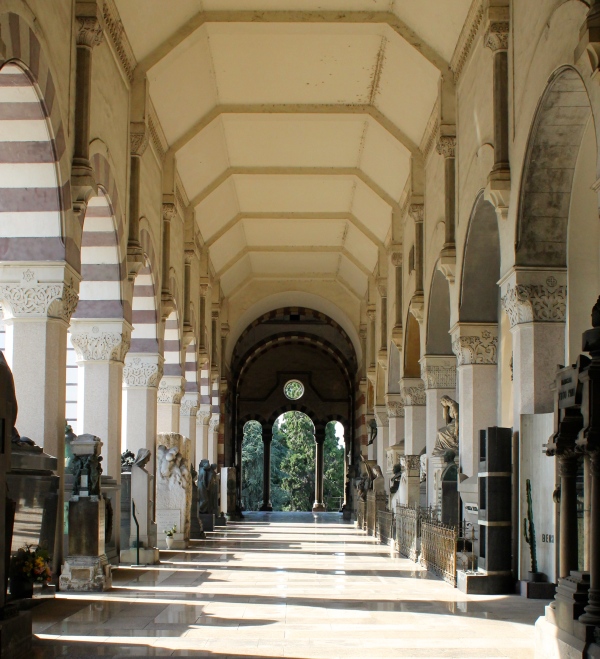 The Famedio is huge, ancient and made nearly entirely of marble. Needless to say it’s a spectacular “gravestone.” Two wings extend out from each side of the Famedio and beyond that the rest of the large cemetery, 62 acres filled to the brim with statues, trees, crosses and house-sized monuments for the deceased.
The Famedio is huge, ancient and made nearly entirely of marble. Needless to say it’s a spectacular “gravestone.” Two wings extend out from each side of the Famedio and beyond that the rest of the large cemetery, 62 acres filled to the brim with statues, trees, crosses and house-sized monuments for the deceased.
In a cemetery you typically observe the ground, scanning headstones and paying respect. Here, however, your more likely looking up.
 Following the tree-lined paths I eventually made my way to the end of the cemetery to a compact, Greek-deco building. Known simply as the “Temple,” this is the Tempio Crematorio, the Crematory. Though no longer in use, the Crematory reinforces the Cemetery’s attention to various religions.
Following the tree-lined paths I eventually made my way to the end of the cemetery to a compact, Greek-deco building. Known simply as the “Temple,” this is the Tempio Crematorio, the Crematory. Though no longer in use, the Crematory reinforces the Cemetery’s attention to various religions.
If I felt completely alone in the courtyard, the only people I left behind near the front of the Cemetery, I felt even more so in the Crematory. Stepping inside the church-like building, every wall is covered, almost decorated, with the inscriptions and flowers featured on the “boxes” of passed Milanese.
There’s an abundance of natural light, a give-away to the structure’s modifications as the practice of cremation was perfected over the years. In fact, Milan was the first in Italy and one of the first in Europe to adopt cremation as a practice. Today, urns from the 1800s sit in yellow alcoves and the old ovens are barely blocked by faded red doors.
However, this isn’t meant to be a ghost story. Actually the Cemetery has little of the Halloween-cemetery feel. Rather, it seems to be a celebration of art, architecture and, most definitely, a city – one made up of art, architecture and, most importantly, its citizens.
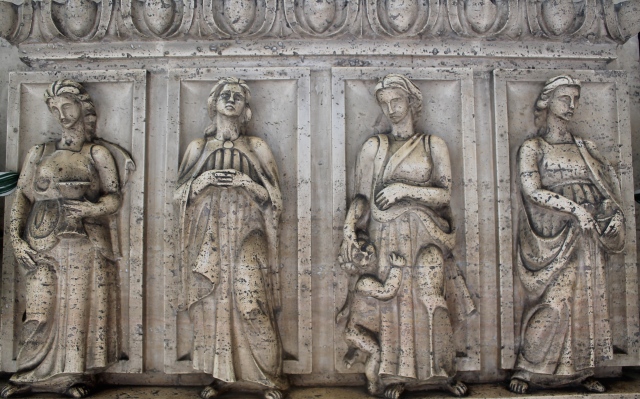
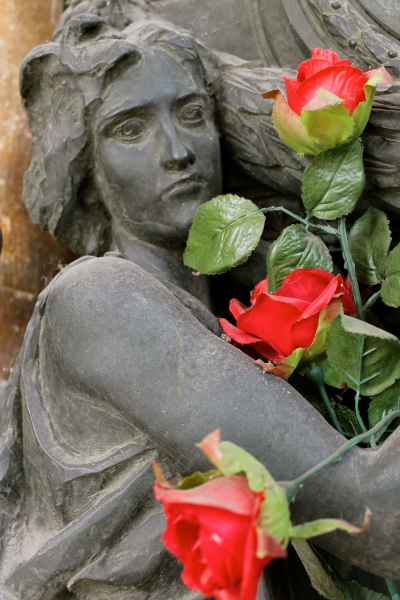 So yes, you’re looking at a cemetery, at graves, mausoleums, even the ancient, now closed, crematory – but you’re also looking at perhaps the most self-representative history and art of Milan.
So yes, you’re looking at a cemetery, at graves, mausoleums, even the ancient, now closed, crematory – but you’re also looking at perhaps the most self-representative history and art of Milan.
Usually a cemetery is not on a traveler’s must-see list, but in the case of Milan, maybe it should be.
How to Get There:
You can take the #37 bus to fermata Monumentale, the 2, 4 or 7 tram to fermata Farini or, perhaps the easiest, is to go to Garibaldi Station (via subway or train) and walk from there. It’s about five minutes away.

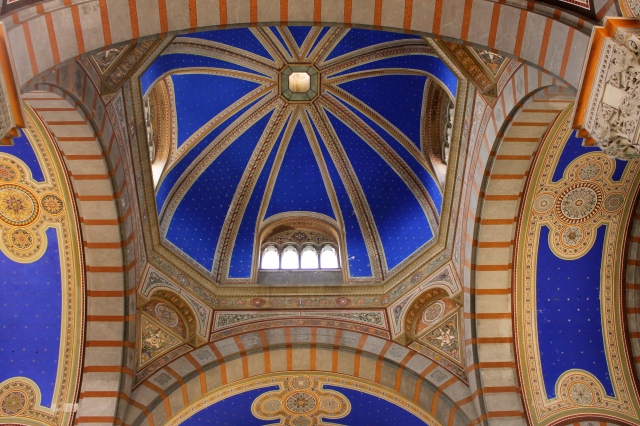

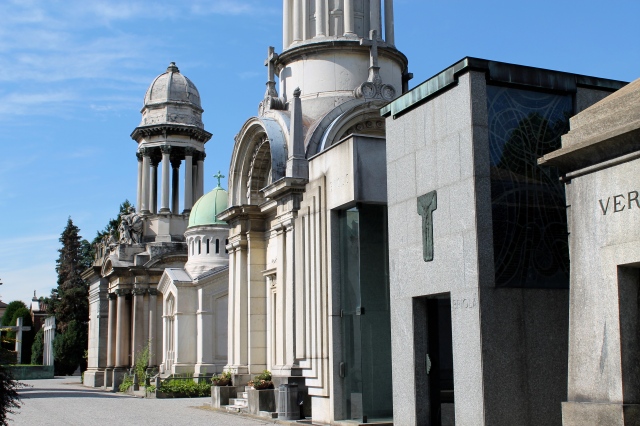

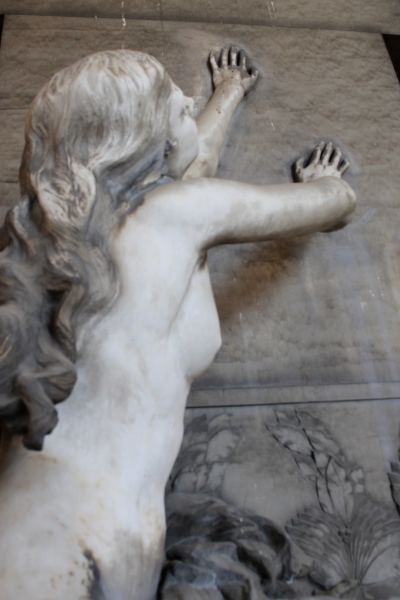

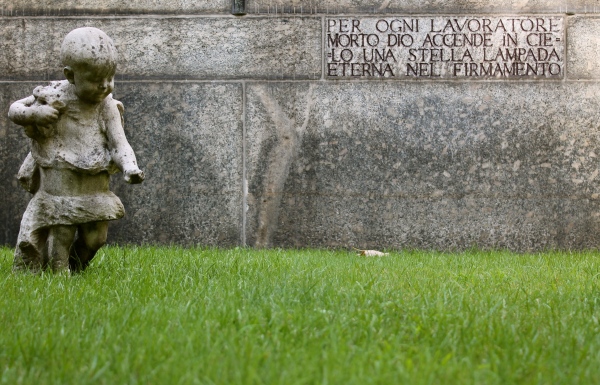
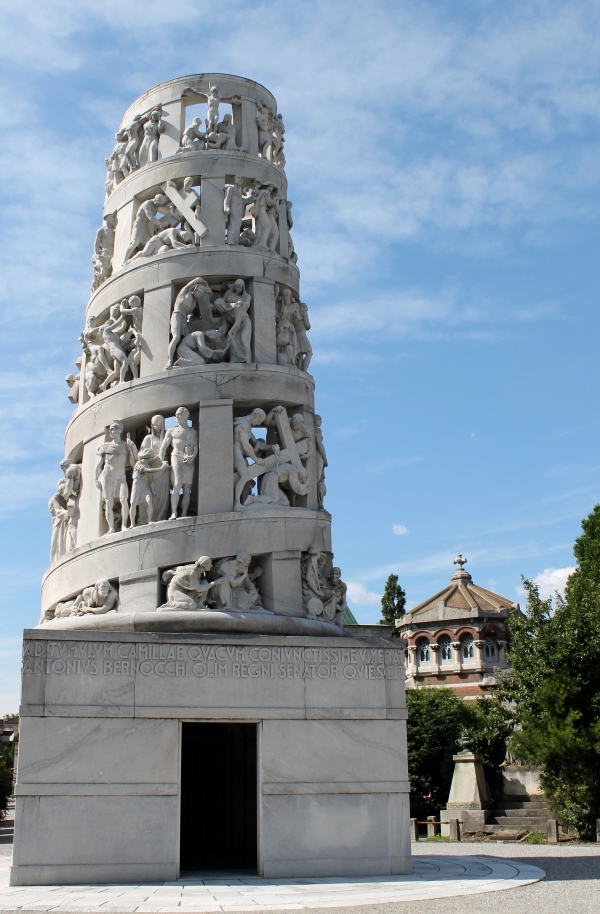
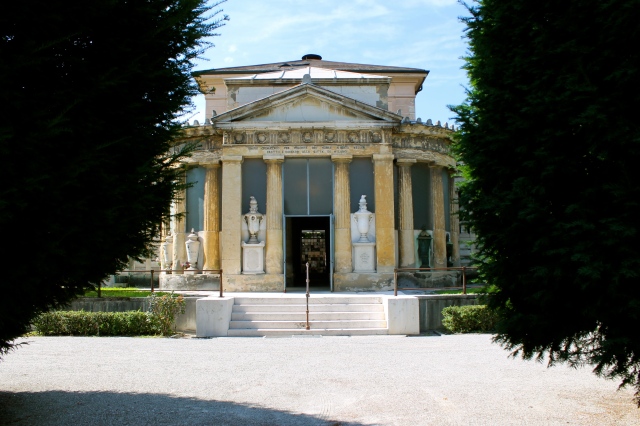
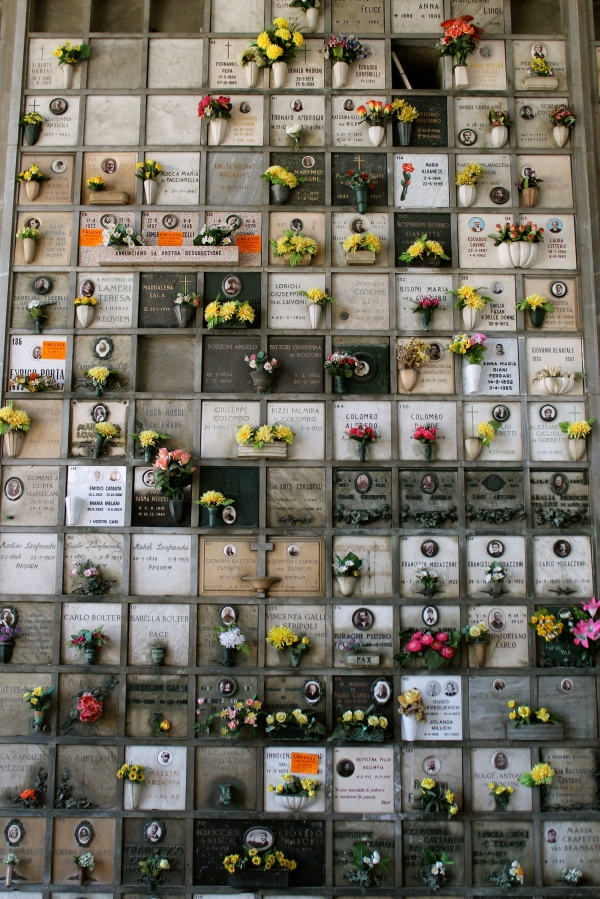
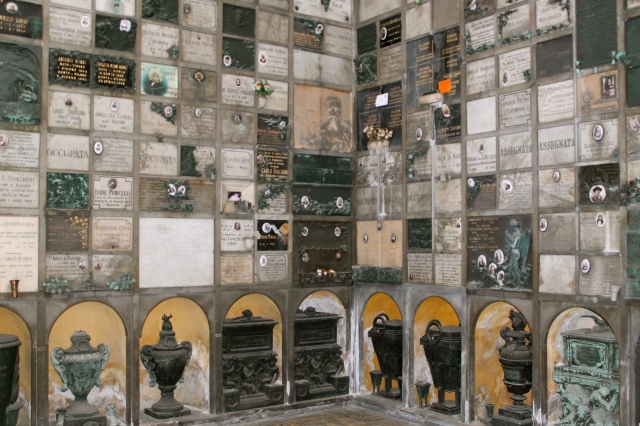
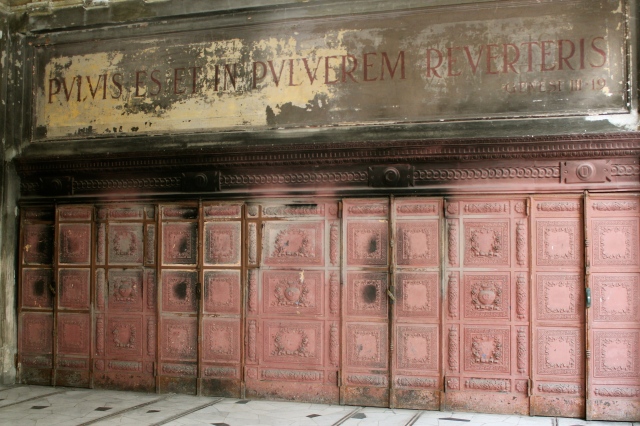
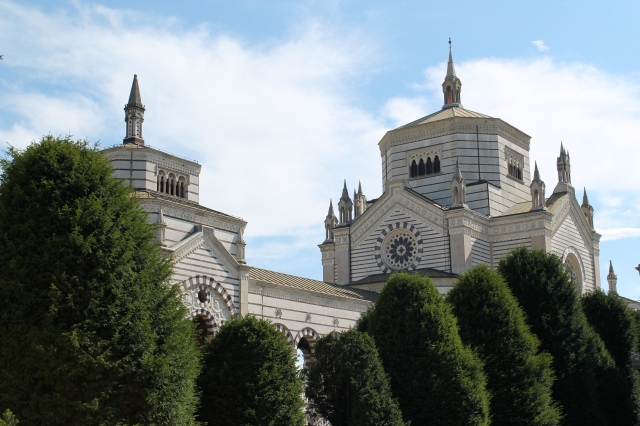

Wonderful! Do you know any history or details regarding the “jumping/leaping/falling?? woman” modern marble & glass sepulhcure? It appears to have a woman maned “Polli/Contessa de Lun_______(Can’t read) ” placed there. I have not had any luck on my own. Have a wonderful holiday & New Year! Tara Hawk “Tarahawk64@gmail,com”
Thanks Tara! I actually don’t know that story – I’ll have to do more research!
Pingback: Experienta #burlaceala sau cum le-am surprins pe fete si era sa pierdem avionul